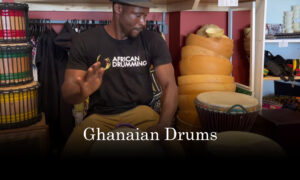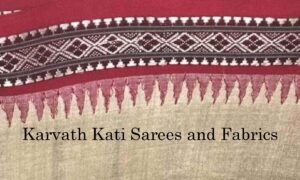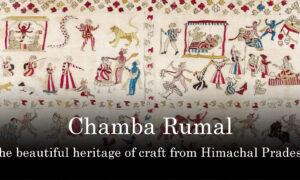Introduction to Javanese Batik
In the heart of Indonesia lies a cultural treasure that transcends time and space – Javanese Batik. With its intricate patterns, vibrant colours, and rich symbolism, Javanese Batik is more than just a textile; it is a reflection of Indonesia’s rich heritage and cultural identity. In this blog post, we will delve into the origins, cultural significance, production process, and modernization of Javanese Batik, exploring its journey from ancient tradition to contemporary art form.
Historical Evolution
The roots of Javanese Batik trace back over a millennium, with evidence of Batik-making techniques dating as far back as the 4th century. However, it was during the 19th century that Batik gained widespread popularity across the Indonesian archipelago, particularly during the colonial era. The intricate designs and vibrant colours of Javanese Batik captivated the hearts of Europeans, leading to its global recognition as a symbol of Indonesian culture.
Cultural Significance
Javanese Batik holds deep cultural significance within Indonesian society. Each pattern and motif carries its own meaning and symbolism, reflecting aspects of Javanese life, beliefs, and traditions. For example, motifs inspired by nature, such as flowers, birds, and animals, symbolize harmony with the environment, while geometric patterns represent unity and balance. Moreover, certain motifs are reserved for special occasions, such as weddings or religious ceremonies, serving as a form of cultural expression and identity.
Process
The process of Javanese batik making is a meticulous and intricate craft that involves several stages, each requiring skill, patience, and precision. Here, I’ll walk you through the traditional steps of creating Javanese batik, including the local names of the ingredients used:
Preparation of Materials
Kain: The fabric used for Javanese batik, typically made from natural materials such as cotton or silk, is referred to as “kain” in the local language.
Malam: Javanese wax, known locally as “malam,” is prepared by melting a mixture of beeswax and paraffin wax in a metal pot over a low flame. This wax serves as a resist agent in the batik-making process.
Drawing the Design
Tulis: The initial design is drawn onto the fabric using a tool called “tulis” or “canting.” The tulis is a small copper container with a spout, filled with molten wax, which is used to trace intricate patterns onto the fabric.
Applying the Wax
Canting: Using the tulis, the artisan carefully applies hot wax onto the fabric, following the lines of the design. This process requires a steady hand and precise movements to ensure the wax forms clean and crisp lines on the fabric.
Waxing the Background
Tjanting: After outlining the design, the artisan uses a larger tool called “tjanting” to fill in the background areas with wax. The tjanting has a wider spout, allowing for faster application of wax over larger areas of the fabric.
Dyeing Process
Pewarna: Once the wax has dried, the fabric is submerged into vats of natural or synthetic dyes, depending on the desired colours. The dyes are referred to as “pewarna” in the local language. The wax acts as a resist, preventing the dye from penetrating the areas covered with wax.
Boiling Off Wax
Melorot Malam: After dyeing, the fabric is boiled in hot water to remove the wax. This process, known as “melorot malam,” causes the wax to melt and separate from the fabric, revealing the intricate batik design underneath.
Finishing Touches
Membuat Pola: Once the wax has been removed, the batik fabric may undergo additional processes, such as “membuat pola” or pattern-making, where additional layers of wax and dye may be applied to enhance the design or add decorative elements.
Final Washing
Mencuci: Finally, the batik fabric is washed in cold water to remove any excess dye and to set the colours. This process, known as “mencuci,” ensures that the batik fabric is clean, vibrant, and ready for use.
Modernization
While Javanese Batik remains deeply rooted in tradition, there has been a concerted effort to modernize the industry and adapt to changing times. This has led to collaborations between Batik artisans and contemporary artists and designers, resulting in innovative interpretations of traditional motifs and designs. For example, renowned Indonesian fashion designer Anne Avantie collaborated with local Batik artisans to create a collection showcasing traditional Javanese motifs with a modern twist. The collection received widespread acclaim, both domestically and internationally, helping to elevate the status of Javanese Batik on the global stage.
Collaborations with Artists and Designers
In addition to Anne Avantie, numerous other artists and designers have collaborated with Batik artisans to create unique and innovative pieces. For example, in 2020, Indonesian artist Eko Nugroho collaborated with Batik artisans from Yogyakarta to create a series of contemporary Batik artworks inspired by traditional Javanese folklore and mythology. The collaboration brought together the ancient art of Batik-making with modern artistic expression, resulting in a fusion of tradition and innovation.
Conclusion
In conclusion, Javanese Batik is more than just a textile; it is a testament to Indonesia’s rich cultural heritage and artistic prowess. From its ancient origins to its modern interpretations, Javanese Batik continues to captivate the hearts and minds of people around the world. As we celebrate this timeless art form, let us not forget the artisans whose skill and dedication have kept this tradition alive for generations to come.




























